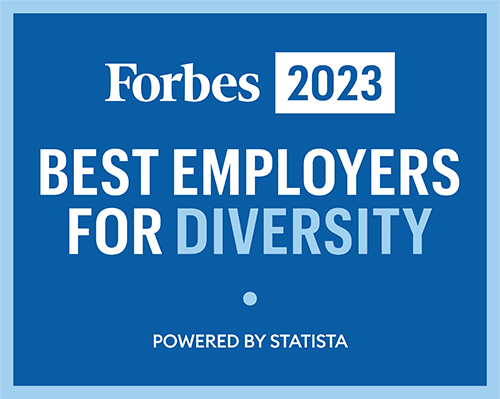Building Trust Needed for Creativity
In a previous blog, I touched on employee burnout. It is difficult to get professional insight and recommendations from an employee who is burned out. Expecting skillful creativity in a cookie-cutter environment can be similarly challenging. Leaders must establish a foundation of trust that provides the out-of-the-box tools that allow true differentiation, that is, new ways of doing business that let them break out of industry norms.
In a First Round Review article titled Practical Fameworks for Beating Burnout, Roli Saxena, Customer Success Lead at Clever, was quoted as saying,
“Most organizations haven’t evolved to create an environment that embraces the diversity of their people which places an additional burden — or you can even think of it as a tax — on the folks who have to strive to fit in with the prevailing culture. They basically have to be someone they’re not at work, and that’s exhausting.”
Communicate with a DISC
Understanding that different people communicate in different ways is the foundation for allowing diversity that leads to creativity. Employees must have a black-and-white outline of skills and accomplishments, but the ways each individual gets to that outline is the coloring between the lines.
Collaboration software company, Atlassian’s blog post, 4 Communication Styles and How to Navigate Them in the Workplace, describes this well:
When figuring out how you can communicate effectively with someone, it’s important to understand their broader personal style. Are they direct? Analytical? Sociable? Business-like? Behavioral traits clue us into how people respond to information, which, in turn, helps us anticipate how to converse in a way that strengthens the relationship.
By learning to identify and communicate with each communication style using the DISC profile or another measure you’re familiar with, you can establish a trusting relationship with each employee on your team, on collaborating teams, and with working partners. When each person feels understood and, in turn, understands what you are saying in a way that is clear to them, you can begin to work towards creativity through clarity.

Break Through the Walls
You hired each of your employees to your team for their talents. When bringing on a new staff member, ask them, explicitly, what their communication preferences are. Doing this will help you find ways to ensure you get the contributions you need. The ability to communicate effectively with your team and find ways to get their input speaks to your leadership. If a person’s communication style is to be quiet in meetings, provide alternatives for them to speak up. Speaking up is not always oral. Encourage ways for Conscientious and Steady communicators to contribute including:
- Balancing contribution opportunities for employees to contribute
- Being creative yourself: asking for suggestions, round robin
- Keeping stakeholders engaged after the meeting. Ask for reactions to meetings via email, calendered time, or other methods.
- Requesting specific reactions in email or face-to-face conversations/small group communication
Keep in mind that not everyone leads and contributes out loud. Maybe quiet contribution is the employee’s style — but know that. Know who your social Stevens are — they might be able to get you a smooth collaboration with a department you don’t know well because they play on the company softball team with a few employees there. Leverage these connections by recognizing the communicators skills for providing these opportunities, offering a complimentary value to this trait.
Do not expect that the optimal work environment is a permanent one. While the employee worked best in an open office at a past job and indicated that preference when they came on board, they may find that the open workspaces in your organization are more distracting and actually limit ability to do the best work. Commute time and changing personal commitments could make a flexible schedule the best fit. Along these lines, an understanding of the best working conditions can allow you to know when things like a rush project require you to asking for more contribution than the employee would like. Know what equity, time, dollars, perks, they prefer for extra work that inevitably comes along.
Trust Creates Confidence
Established trust gives employees the ability to do the things they do well. Be warned, however, this trust can easily be broken if it is taken for granted. Use the knowledge you have to proactively recognize the traps of traditional environments: overworked employees, physical presence, lack of industry equity.
When one employee leaves, adding their duties to an existing employee’s does not allow the existing employee to do their job well — no matter how much more they are paid. Assure employees that asking for delegation of work will not be seen as them being unable to do their job, in fact, there is probably someone who should be doing what needs to be done, allowing all duties to be performed to the best of each individual’s ability.
Reenergize and revitalize multigenerational teams while also recognizing that there are stereotypes that are not indicative of each individual. The digital natives in this new generation of employees are known for their individuality. They appreciate the ability to wear jeans and sneakers into the office. While Gen Xers are digital nomads, not having started their careers with today’s technologies, many do have the tenancies of digital natives. They appreciate the ability of the internet to allow them to do their job at home a couple days a week where they can focus on work without distractions. If current practices facilitate these kinds of opportunities, encourage them! Allow flexible work conditions. Out of sight (in the office) does not mean out of mind (to the employee). Like sabbaticals, alternative settings can foster new ideas.
Confidence is what dynamic players need to contribute creatively. When we overlook each employee’s unique style and withhold the ability for them to offer their best work, what we are really saying is that we don’t have enough understanding and trust in them to do the job we hired them to do. Sometimes our misunderstanding of the employee comes can permeate as lack of confidence which is interpreted as lack of trust. When employees understand that they can expect you to be honest with them and that you know what they need to be happy in their job, they have the certainty needed to push the boundaries of their experience and skills. This creative contribution is the very input needed to take the organization to the next level.
Shift Points
- Understand the ways your individual employees contribute and communicate best
- Do not expect new ways of doing things when you are tied to old-school thinking lets face it, when was the last time a chalkboard functioned like a touchscreen?
- Be adventurous enough to allow creativity to bloom
- Allow yourself the ability to build the trust to let creativity flow

